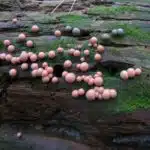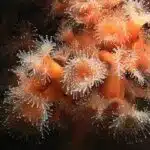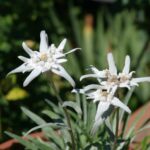The anemone flower is a delicate and beautiful bloom that has captured the hearts of many gardeners and flower enthusiasts. With its vibrant colors and unique shape, the anemone flower has become a popular choice for floral arrangements and garden displays.
In this article, we will explore the meaning behind the anemone flower, the different types of anemones, and provide tips on how to grow and care for these stunning blooms.
What is an Anemone Flower?
Anemone flowers, also known as windflowers, are a genus of perennial plants that belong to the buttercup family (Ranunculaceae). They are native to temperate regions throughout the world, including North America, Europe, and Asia.
Anemone flowers are known for their distinctive shape, which features a central button-like structure surrounded by a ring of delicate petals. They come in a variety of colors, including white, pink, red, purple, and blue.
The Meaning Behind Anemone Flowers
Like many flowers, anemones have symbolic meanings that vary depending on the culture and context. Here are some of the most common meanings associated with anemone flowers:
- Protection: In ancient Greek mythology, anemones were believed to have sprung from the tears of Aphrodite, the goddess of love, as she mourned the death of her lover, Adonis. The flowers were said to symbolize protection against harm and ill fortune.
- Anticipation: In some cultures, anemones are associated with anticipation and the promise of good things to come.
- Fragility: Due to their delicate petals and short lifespan, anemone flowers are sometimes used to symbolize fragility or the fleeting nature of beauty.
Types of Anemone Flowers
There are over 120 species of anemone flowers, but some of the most popular types include:
- Japanese Anemone (Anemone hupehensis): A late-blooming variety that produces pink, white, or lavender flowers in the fall.
- Wood Anemone (Anemone nemorosa): A woodland species that produces white or pink flowers in the spring.
- Poppy Anemone (Anemone coronaria): A Mediterranean species that produces red, pink, or white flowers in the spring.
- Grecian Windflower (Anemone blanda): A low-growing species that produces blue, pink, or white flowers in the spring.
How to Grow Anemone Flowers
Anemone flowers are relatively easy to grow, and with the right care, they can thrive in a variety of conditions. Here are some tips on how to grow anemone flowers:
- Planting: Anemones should be planted in well-draining soil in an area that receives partial to full sun. They should be planted in the fall or spring, depending on the species.
- Watering: Anemones prefer moist soil, but they can be susceptible to root rot if overwatered. Water regularly, but allow the soil to dry out slightly between waterings.
- Fertilizing: Anemones do not require heavy fertilization, but a light application of balanced fertilizer in the spring can help promote healthy growth.
- Pruning: Anemones should be deadheaded regularly to promote continuous blooming. After the first hard frost, cut back the foliage to the ground.
Using Anemone Flowers in Floral Arrangements
Anemone flowers are a popular choice for floral arrangements, thanks to their unique shape and vibrant colors. Here are some tips on how to use anemone flowers in your arrangements:
- Pair with complementary colors: Anemones come in a variety of colors, so it’s important to choose complementary colors to create a harmonious arrangement. For example, pair pink anemones with blue or purple flowers for a visually striking display.
- Use as a focal point: Anemone flowers make excellent focal points in floral arrangements due to their distinctive shape. Place them in the center of a bouquet or use them to create a dramatic statement in a centerpiece.
- Mix with other textures: Anemone flowers pair well with other flowers and greenery, but they also work well when mixed with different textures. Try pairing them with succulents or grasses for a unique and modern look.
Anemone Flower in History and Culture
Anemone flowers have a long and storied history, dating back to ancient Greek mythology. Here are some interesting facts and stories about anemone flowers in history and culture:
- In ancient Greece, anemones were considered a symbol of death and were often placed on graves.
- In the Victorian era, anemones were a popular flower used in bouquets and floral arrangements.
- Anemone flowers were frequently depicted in art during the Renaissance period, including works by Leonardo da Vinci and Sandro Botticelli.
- The poppy anemone (Anemone coronaria) is the national flower of Israel.
- In Japan, anemone flowers are often associated with death and bad luck due to their resemblance to a spider.
Tips for Buying and Caring for Anemone Flowers
If you’re interested in incorporating anemone flowers into your home or garden, here are some tips for buying and caring for these delicate blooms:
- Look for healthy plants: When purchasing anemone plants, look for those with healthy foliage and no signs of disease or pest damage.
- Plant at the right time: Anemones should be planted in the fall or spring, depending on the species. Make sure to plant them at the appropriate time to ensure healthy growth.
- Water regularly: Anemones prefer moist soil, but they can be susceptible to root rot if overwatered. Water regularly, but allow the soil to dry out slightly between waterings.
- Fertilize sparingly: Anemones do not require heavy fertilization, but a light application of balanced fertilizer in the spring can help promote healthy growth.
- Protect from pests: Anemones can be vulnerable to pests such as aphids and slugs. Use organic pest control methods to protect your plants.
Anemone Flower Symbolism and Meaning
As mentioned earlier, anemone flowers have a variety of symbolic meanings depending on the culture and context. Here are some additional meanings associated with anemone flowers:
- Love: In some cultures, anemone flowers are associated with romantic love and the idea of a long-lasting and faithful relationship.
- Healing: Anemone flowers are sometimes used in herbal medicine to treat a variety of ailments, including headaches and respiratory issues.
- Protection against evil: In some cultures, anemone flowers are believed to provide protection against evil spirits and negative energy.
Anemone Flower Colors and Their Meanings
The color of anemone flowers can also have different meanings. Here are some common anemone flower colors and their associated meanings:
- Red: Anemone flowers in shades of red are often associated with passion, love, and romance.
- Pink: Pink anemone flowers can represent gentleness, grace, and affection.
- White: White anemone flowers are often associated with purity, innocence, and spiritual growth.
- Blue: Blue anemone flowers are associated with calmness, tranquility, and inner peace.
- Purple: Purple anemone flowers can represent royalty, power, and ambition.
Anemone Flower FAQs
If you’re curious about anemone flowers , here are some frequently asked questions about these beautiful blooms:
How long do anemone flowers last?
Anemone flowers have a relatively short lifespan, lasting only a few days to a week once they bloom. However, they can produce multiple blooms throughout the growing season, providing a steady stream of beauty in your garden or home.
Can anemone flowers be grown in containers?
Yes, anemone flowers can be grown in containers, making them a great choice for apartment dwellers or those with limited garden space. Make sure to choose a container with adequate drainage and plant in well-draining soil.
Are anemone flowers toxic to pets?
Anemone flowers contain toxic compounds that can be harmful to pets if ingested in large quantities. Keep anemone flowers out of reach of pets, and seek veterinary attention if you suspect your pet has ingested any part of the plant.
Can anemone flowers be used in wedding bouquets?
Yes, anemone flowers are a popular choice for wedding bouquets due to their unique shape and vibrant colors. They pair well with other wedding flowers, such as roses and peonies, and can add a touch of whimsy to any bridal bouquet.
How do you deadhead anemone flowers?
To deadhead anemone flowers, simply cut the stem just above the spent bloom. This will encourage the plant to produce more blooms throughout the growing season.
Anemone Flower Care and Maintenance Tips
While anemone flowers are relatively easy to grow, they do require some care and maintenance to thrive. Here are some tips on how to care for your anemone plants:
Soil and Water
Anemone flowers prefer well-draining soil that is rich in organic matter. They also prefer moist soil, but can be susceptible to root rot if overwatered. Water your anemone plants regularly, but allow the soil to dry out slightly between waterings.
Light and Temperature
Anemone flowers prefer partial to full sun, depending on the species. They also prefer cool temperatures and can struggle in hot and humid conditions. If you live in a warm climate, consider planting your anemones in a partially shaded area or providing some shade during the hottest parts of the day.
Fertilizer
Anemone flowers do not require heavy fertilization, but a light application of balanced fertilizer in the spring can help promote healthy growth. Avoid overfertilizing, as this can lead to leggy growth and reduced flowering.
Pruning and Deadheading
To promote continuous blooming, deadhead your anemone flowers regularly. After the first hard frost, cut back the foliage to the ground to prepare your plants for the winter months.
Pest and Disease Control
Anemone flowers can be vulnerable to pests such as aphids and slugs. Use organic pest control methods to protect your plants, such as neem oil or insecticidal soap. Anemone flowers can also be susceptible to fungal diseases, so make sure to plant them in well-draining soil and avoid overwatering.
Conclusion
Anemone flowers are a beautiful and unique addition to any garden or floral arrangement. With their vibrant colors and distinctive shape, anemone flowers have captured the hearts of many flower enthusiasts and gardeners.
Whether you’re a seasoned gardener or just starting out, anemone flowers are relatively easy to grow and care for. By following the tips outlined in this article, you can enjoy the beauty of anemone flowers in your home or garden for years to come.





























